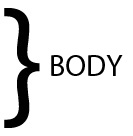How to write a Farewell Letter
How to Write a Farewell Letter
Writing a farewell letter can be an emotional affair both for the employee and the employer. This is especially the case during retirement. A long association is formed and a bond develops between the person who is leaving and those who have been working along with him. It is also a nostalgic point. There is gratitude, appreciation, forgiveness, love, kindness and all sorts of emotions that become the ingredients of a farewell letter. While writing a farewell letter you may be required to write a farewell letter to people of different designations and pertaining to certain stage of employment. There are farewell letters to be written to your boss, the management, a retiring employee, your co-workers and your colleagues. While the formats will vary but the main ingredients are quite similar. These have been provided in the tips for writing a farewell letter. Keeping in mind these tips and of course the formal rules, a farewell letter can be bettered.
Farewell Letter Writing Tips
- Create an Outline – It is better to map out an outline of your letter before you actually start writing it. Make a list of your recipients, categorise them as personal or professional. This makes it easy to for you to write formal and informal matter to the respective. You may require certain dates to recall certain events or progress, like promotion, date of joining office etc. You may need to arrange these in a chronological order to maintain a continuum.
- Drafting – With ingredients in your sight it becomes easy to use them as per your requirements. It is only in drafting that you can take anything for granted and spend the time only in preparing the content of the letter. Thus, forget all the corrections related to grammar rules, punctuation, spelling, sentence structure or word limit. Pour out your emotions but don’t drift away from the topic. Whatever you write you will summarise it, edit it and make it perfect at a later stage.
- Announce and Confirm – Farewell letter is started with the announcement of your departure or confirming your departure. Many people may not be aware of your decision or an impending formality. This way, you not only break the news but also confirm it. Depending upon the requirement, you have the option to explain or not explain, the reason for your farewell or goodbye.
- Use a Friendly Tone – Letter of farewell is a friendly correspondence. It doesn’t need to be ‘Strictly by the book’, address the reader as you would do when you are speaking to him/her in person. Writing to colleagues becomes friendly by default but as a senior you will have to shed some of the authority and appear mildly informal in your say.
- Express your Gratitude – Whether you are writing as an employee or employer, you must show your gratitude towards the designated. Express your thanks for your association with your colleagues, co-workers, seniors etc. They have been supportive, at times kind, have loved you, befriended you at some point or the other.
- No Negative Comments or Sentiments – Never mention a person's flaws, shortcomings in the office or indulge in gossip or include a controversial topic. You may never know what sort of emotion a person may be going through, when he is leaving. This is not the time to complain either. Do not mention any unpleasant incident or any other occurrence which may have a negative effect on the recipient.
- Always include Positive Comments – As opposed to negative, always include positive comments. List the extraordinary qualities and talent of a person. Mention one or two contributions of the recipient. Accredit the person whom you think is worthy. As an employer it is your duty to express your goodwill and best wishes for the future. As an employee praise your colleagues, seniors etc. for every little or big efforts they have made towards you. You may never know when you may have to come back from where you started.
- Recall – A goodbye letter is not in its element until and unless it doesn’t have an anecdote or a tale to tell. This is because a person has interacted, shared joy, love, sadness etc. All good experiences make up fond memories not only for the one who is leaving but also for those who are bidding adieu. It strengthens relationships and cohesiveness. It also shows that you remember that person and this remembrance is of value to that person and that alone is satisfying for him.
- Neither too Lengthy nor too Long – As a rule a formal farewell letter will be straight to the point with a substantial amount of praise, gratitude and relevant content. An informal farewell letter can be longer but unless and until it is evoking it will not sustain the interest of the reader. So keep the length to the extent, where reading the letter doesn’t becomes a tedious task for your own self.
- End on a Positive Note – It is essential to show your character and what better way than to end a letter on a positive note. It will make you feel proud and will encourage the readers to develop a positiveness even when they aren’t actually prepared or don’t want to leave. Express your feelings, that you still have the strength but a rule is a rule and it has to be followed. Express your best wishes for the future of everyone you are leaving and congratulate them for doing a good job. Repeat how much you value this friendship or association. You can also use some phrases or a humorous one liners. You may want to stay in touch with the one’s you are departing with, in that case, mention your address to make a clear invitation to continue communication. Sign it to acknowledge its authenticity.
- Proofread it – Check for grammatical errors, incomplete sentences, spelling mistakes or any unintended or controversial saying. Read it aloud to yourself to figure out mistakes which are missed out in writing. This is to ensure that you don’t pass on a wrong or poor impression on part of the reader for which your letter may be remembered.
Farewell Letter Formats
Farewell Format (formal)
|
Organisation Letter Head OR Your Name Your Address (can be positioned left, right or centre) Date Dear Recipient (Salutation) First Paragraph – Brief information about leave, relocation, resignation, retirement etc. Second Paragraph – Expression of your emotions, experiences, positive views, suggestions etc. Third Paragraph – Offer assistance etc.
Subscription – Thanking you, yours sincerely etc. Your Signature Your Typed First Name Last Name Your Designation (as required |
Farewell Letter Format 2
|
Date
Dear Recipient (Salutation) First Paragraph – Brief information about leave, relocation, resignation, retirement etc. Second Paragraph – Few lines about farewell, goodbye with certain anecdotes, experiences etc. Third Paragraph – Further assistive information
Subscription – Thanking you, yours sincerely etc. Your Signature / Your Name (as required) |



